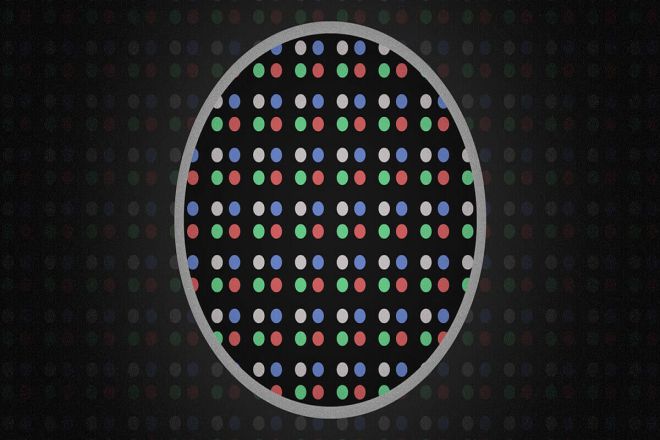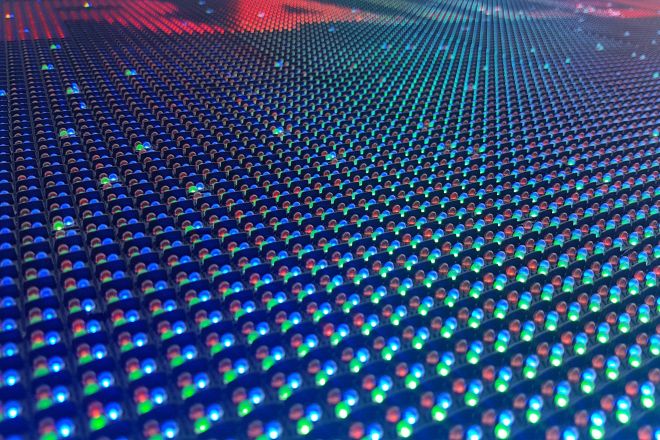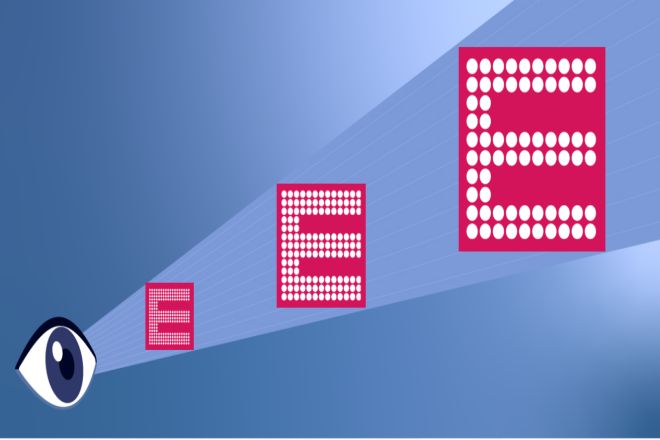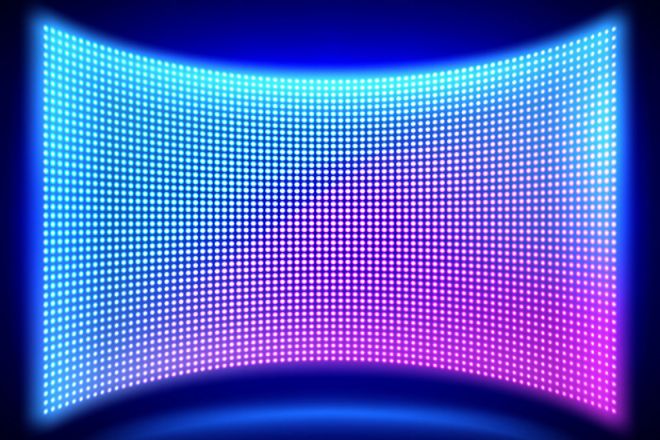序章

In the rapid development of digital display technology, LED表示画面 have gradually occupied a dominant position in the market with their advantages such as high brightness, long life, and low power consumption. Among the many technical parameters of LED display screens, PITCH, as a key indicator to measure the fineness of the display screen, has attracted much attention from both inside and outside the industry.
1. Definition of PITCH of LED display screen
PITCH, which is a general term for dot pitch, pitch, and ピクセルピッチ, is a key technical parameter in LED display screens. It specifically refers to the distance between the centers of adjacent lamp beads in the LED display screen, which is used to measure the fineness of the display screen. The unit of this distance is a millimeter (mm).
In the industry, in order to simplify and facilitate communication, the letter “P” plus a specific value is often used to abbreviate dot pitch. For example, if the dot pitch of an LED display screen is 2.5mm, it is abbreviated as P2.5; if the dot pitch is 3mm, it is abbreviated as P3. This abbreviation method makes the naming of LED display screens of different specifications and models more unified and easy to identify.
With the continuous development of LED packaging technology, especially the advancement of packaging processes such as SMD (surface mount technology) and COB (chip on board packaging technology), the pitch (PITCH) of LED display screens can be smaller. These advanced packaging technologies make the size of LED lamp beads smaller and more closely arranged so that higher pixel density and more delicate display effects can be achieved in a limited area.
For example, the previously difficult-to-achieve P1.2mm (i.e., 1.2mm dot pitch) is now possible, and P1.0mm or even smaller dot pitch products have appeared on the market. These advances not only improve the display effect of LED display screens but also broaden its application areas.
2. The impact of PITCH on the display effect of LED display screens

- Pixel density and resolution
The PITCH of LED display screens determines its pixel density and resolution. Smaller PITCH means that more LED lamp beads can be accommodated in a unit area, thereby achieving higher pixel density. High pixel density enables the display screen to present more details and color levels, making the picture more delicate and realistic.
At the same time, higher resolution also means that the display screen can show more content, allowing viewers to obtain information more comprehensively.
- Viewing distance and visual experience
Different viewing distances have different requirements for the PITCH of LED display screens. Smaller PITCH is suitable for closer viewing distances because viewers can see the details and textures on the screen more clearly. However, if the viewing distance is far, choosing too large a PITCH may cause the picture to be blurred or distorted, affecting the audience’s visual experience.
Therefore, when choosing an LED display screen, it is necessary to choose a suitable PITCH based on the actual viewing distance to ensure that the audience can get the best visual effect.
- 消費電力と放熱
The size of the PITCH also affects the power consumption and heat dissipation performance of the LED display screen. A smaller PITCH means that there are more LED lamp beads per unit area, so the overall power consumption may increase.
In addition, since LED lamp beads generate heat when working, a denser arrangement may lead to increased heat dissipation problems. To solve these problems, manufacturers usually use efficient heat dissipation design and high-quality heat dissipation materials to ensure the stable operation of the display screen.
However, for some specific application scenarios (such as outdoor billboards), due to environmental conditions, it may be necessary to further consider the heat dissipation problem to ensure that the display screen does not overheat during long-term operation.
3. Selection of LED display screen PITCH in different application scenarios

- Indoor application
In indoor environments, such as commercial advertisements, conference room displays, etc., the audience is usually close to the display screen, so you can choose an LED display screen with a smaller PITCH to obtain higher resolution and better visual effects.
Smaller PITCH can present more details and color levels, making the picture more delicate and realistic and bringing a more shocking visual experience to the audience.
For example, in a shopping mall or exhibition hall, using an LED display screen with a smaller PITCH, such as P2.5 or P3, can clearly display product details and advertising content, attracting more customers’ attention.
- Outdoor application
In outdoor environments, such as outdoor billboards, stadiums, etc., the audience is far away from the display screen, and the environmental conditions are complex and changeable. Therefore, when choosing an LED display screen, it is necessary to comprehensively consider the viewing distance and environmental factors and choose a moderate or larger PITCH.
A moderate PITCH can ensure a sufficiently far viewing distance and a good viewing angle so that the audience can still clearly see the content on the display screen at a longer distance. At the same time, a larger PITCH is also more suitable for use in direct sunlight or high-brightness environments because a larger distance between lamp beads can reduce light reflection and interference and improve the clarity and readability of the picture.
For example, in stadiums, using LED screens with larger PITCHs, such as P6 or P8, can ensure that the audience can still clearly see the game pictures and advertising information in the distant stands.
- Special application scenarios
In some special application scenarios, such as vehicle-mounted display screens and stage backgrounds, it is necessary to select a suitable PITCH according to specific needs.
The vehicle-mounted display screen needs to take into account the impact of the vehicle’s vibration and bumps on the display screen, so you can choose an LED display screen with anti-seismic performance and choose a suitable PITCH according to the size of the vehicle’s interior space.
The stage background needs to choose a suitable PITCH according to the stage layout and performance content to ensure that the actors can clearly see the background picture on the stage and coordinate with the performance content. In these special application scenarios, choosing a suitable PITCH is not only related to the display effect of the picture but also to the stability and reliability of the display screen.
4. Development trend of LED display PITCH

- Miniaturization
With the continuous advancement of packaging technology and display technology, the PITCH of LED display is gradually developing in the direction of miniaturization. The advancement of packaging technology, such as the mature application of SMD (surface mount technology) and COB (chip on board packaging technology), has made the size of LED lamp beads continue to shrink and the arrangement more closely.
This makes it possible to achieve smaller PITCH, resulting in higher pixel density and more delicate display effects. At present, PITCH products with P1.0mm or even smaller have appeared on the market, and this trend is expected to continue in the future.
- カスタマイズ
With the diversification of market demand, the PITCH selection of LED displays is also increasingly customized. Different application scenarios and needs have different requirements for PITCH, such as indoor commercial advertising requires high resolution and delicate picture effects, while outdoor billboards need to consider viewing distance and environmental factors.
Therefore, LED display manufacturers have begun to provide customized PITCH options to meet the personalized needs of users. This customization is not only reflected in the choice of PITCH but also includes the customization of the size, shape, brightness, contrast, and other aspects of the display.
- 知的
Combined with advanced technologies such as artificial intelligence and the Internet of Things, LED displays are gradually realizing intelligent control and management. Intelligent technology enables LED displays to automatically adjust parameters such as brightness, contrast, and color to adapt to different environments and usage scenarios.
At the same time, intelligent technology can also realize functions such as remote monitoring, fault diagnosis, and automatic repair, and it can improve the stability and operational efficiency of the display.
In the future, with the continuous advancement of technology and the continuous expansion of application scenarios, the intelligence level of LED displays will be further improved.
結論
In summary, the PITCH of LED displays is an important factor affecting their display effects and application scenario selection. By understanding the definition of PITCH, its impact on display effects, and its selection in different application scenarios, we can more accurately choose the LED display that suits us.
最後に、LEDディスプレイについてもっと知りたい方は、 ご連絡ください。
